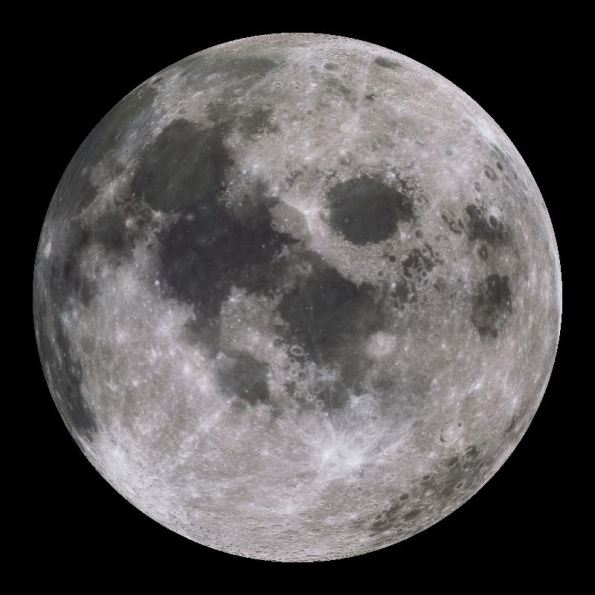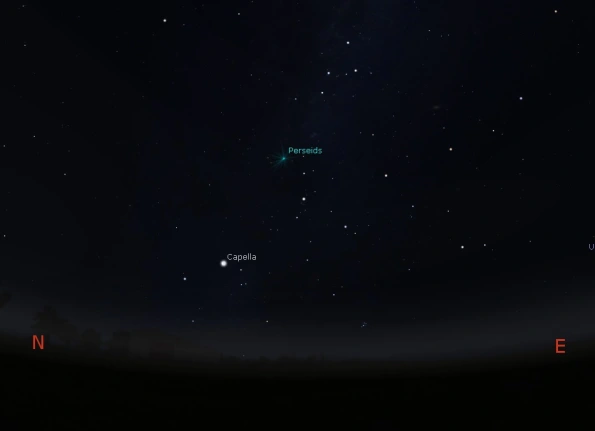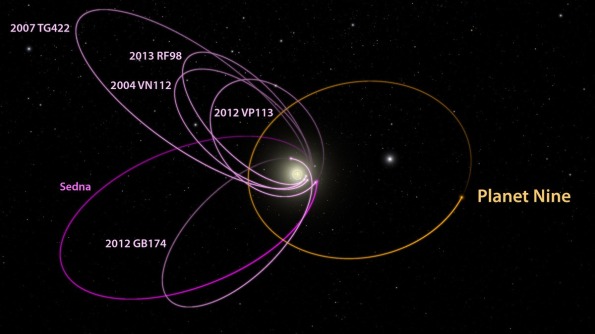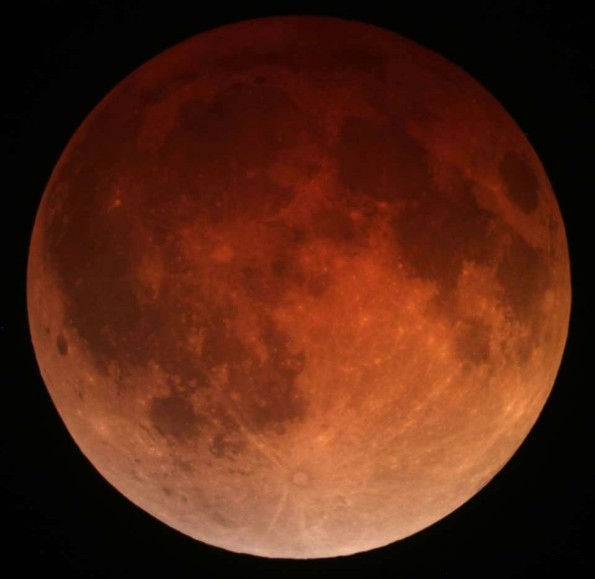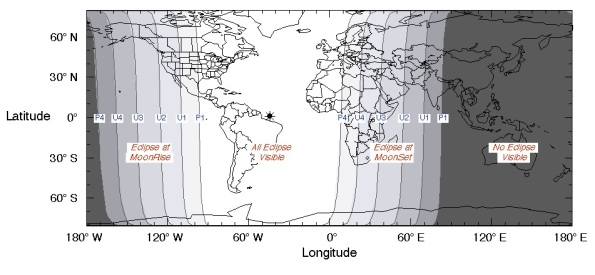Supermoon Nonsense Redux: November 2016
There seems to be a growing excitement about the “Supermoon” that is due to occur on 14 November 2016, when the Moon will be at its closest to Earth in this orbit, and closer than it has been at any time since 1948.
Sure the full moon will look big and bright this Sunday evening/Monday morning, but no more so than normal. It’ll be 14% larger and 30% brighter but your eyes and brain won’t see any difference from a normal full moon. It’s still worth a look – the moon is always a beautiful thing to see – but if you notice any difference in size or brightness, it’ll be your brain playing tricks on you. Maybe the power of suggestion or the Moon Illusion.
Read on to find out why it’s not any more super than normal…
The Moon orbits the Earth in an elliptical orbit, i.e. it is not perfectly circular, and so in each orbit there is a closest approach, called “perigee” and a furthest approach, called “apogee”.
At this month’s perigee the Moon will be 356,511km away from Earth. Closer than normal, sure but only 66km closer than the “Supermoon” that began all the hype back in 2011, so not that much closer.
Let’s start by comparing it to the Moon’s average distance from the Earth, which is ~385,000km. This perigee will be ~8% closer to the Earth than average. OK, that’s a bit closer, but not significantly so.
What about comparing it to the Moon’s average perigee distance, which is ~364,000km. So this “Supermoon” will be ~2% closer to the Earth than it is most months at perigee. Wow!
So what will this mean to you? Nothing at all. The Moon will be 14% bigger in the sky, but your eye won’t really be able to tell the difference. It will also be 30% percent brighter, but your eye will compensate for this too, so altogether this “Supermoon” will look exactly the same as it always does when it’s full.
As to all of those soothsayers claiming that there will be earthquakes and tidal waves. There very well might be, but they’ll be nothing at all to do with the Moon.
Post Script
Supermoons aren’t all that rare. In fact they occur once every 13.5 months.
Thanks to Steve Bell at the UK Hydrographic Office for providing the calculations below:
The Moon orbits the Earth once every 27.321 days (called the sidereal period), but as the Earth is orbiting the Sun at the same time, the Moon’s phases appear to repeat every 29.530 days (called the synodic period, which is the time we use to derive the month).
The Moon’s orbit is elliptical (a squashed circle) and so you would expect a perigee once every 27.321 days. However the elliptical path around which the Moon orbits the Earth precesses (that is it is not fixed with the perigee occurring at the same part of each orbit; the place where perigee occurs moves, or precesses) with a period of 8.8504 years, so that perigee doesn’t occur once every 27.321 days but rather once every 27.554 days (called the anomalistic period).
To calculate the frequency of perigee full moons (“Supermoons”) you need to use the equation:
1/P(perigee&full) = 1/P(perigee) – 1/P(full)
where P(perigee) is the anomalistic period = 27.554 days, and
where P(full) is the synodic period = 29.530 days
and when you put those figures in you find that a full moon will occur at perigee once every 411.776 days (i.e. P(perigee&full)=411.776), or just less than once per year.
Perseids Meteor Shower 2016
August sees the return of the most reliable meteor shower of the year; the Perseids, with rates of shooting stars possibly increasing to over 100 per hour under perfect conditions.
Read my previous blog post Meteor Showers: The What, How, Where, When, Why for general advice on how best to observe meteor showers.
A shooting star – otherwise known as a meteor – is a tiny piece of space dust that burns up in our atmosphere, forming a bright, brief streak of light in the sky. Many people have never seen a shooting star, and think they’re rare events, but given dark skies you can expect to see a few every hour on a clear night. From cities, under light polluted skies, you can’t see most of the faint ones, and so only the rarer bright ones are visible.
However at regular times each year the Earth moves through thick clouds of space dust – left behind by comets – and we get a dramatically increased rate of meteors. On the night of 12/13 August we’ll pass through the densest part of a dust cloud left behind by Comet 109P/Swift-Tuttle, and will see the rate of meteors increase by a factor of 20!
You can begin watching for Perseid meteors now, and the shower will last until late-August, but the peak of the shower occurs overnight on 12/13 August 2016, which means that the nights on either side of this will be best for meteorwatching.
The best time of night to watch the meteor shower is from around 2200 onwards on 12 August, once the radiant, the point from where the meteors appear to originate, rises above the horizon. However the moon will be in the sky until after midnight, and will interfere slightly for observers in dark sites. The later you observe the higher the radiant will be, and the more meteors you’ll see.
The number of meteors that you will observe every hour depends on a number of factors:
•the density of the dust cloud that the Earth is moving through, that is causing the shower in the first place;
•the height above the horizon of the radiant of the shower, the point from which the meteors appear to radiate;
•the fraction of your sky that is obscured by cloud;
•the darkness of your sky, measured using naked-eye limiting magnitude, a measure of the faintest object you can see.
This year the Perseid meteor shower has an expected zenith hourly rate (ZHR) of around 150. This is the number of meteors that you can expect to see if the radiant is directly overhead (the point in the sky called the zenith), and you are observing under a cloudless sky with no trace of light pollution.
However conditions are rarely that perfect. In the UK, for example, the radiant of the shower will not be at the zenith; it will be around 30° above the horizon at 2200, 40° high at midnight, and 50° high at 0200.
Assuming a clear night, the other factor is the limiting magnitude of the sky, a measure of the faintest object you can see. Man-made light pollution will be an issue for most people. From suburbia the limiting magnitude of the sky is ~4.5 (around 500 stars visible), so you will only be able to see meteors that are at least this bright; the fainter ones wouldn’t be visible through the orange glow. In a big city centre your limiting magnitude might be ~3 (only around 50 stars visible); in a very dark site like Galloway Forest Dark Sky Park the limiting magnitude is ~6.5 (many thousands of stars visible), limited only by the sensitivity of your eye. So in most cases it’s best to try and get somewhere nice and dark, away from man-made light pollution.
The calculation that you need to make in order to determine your actual hourly rate is:
Actual Hourly Rate = (ZHR x sin(h))/((1/(1-k)) x 2^(6.5-m)) where
h = the height of the radiant above the horizon
k = fraction of the sky covered in cloud
m = limiting magnitude
Let’s plug the numbers in for the Persieds 2016.
ZHR = 150 at the peak, say.
h = 30° at 2200, 40° at 0000, 50° at 0200, 65° at 0400
k = 0 (let’s hope!)
m = 6.5 (if you’re observing under skies free from light pollution)
So your actual hourly rate under clear dark skies is
(150 x sin(30))/((1/(1-0) x 2^(6.5-6.5) = 75 meteors per hour at 2200
(150 x sin(40))/((1/(1-0) x 2^(6.5-6.5) = 96 meteors per hour at 0000
(150 x sin(50))/((1/(1-0) x 2^(6.5-6.5) = 115 meteors per hour at 0200
(150 x sin(65))/((1/(1-0) x 2^(6.5-6.5) = 135 meteors per hour at 0400
Remember though that these numbers apply only to the peak of the Perseid occuring at these times. If the peak happens at 0400 on 13 August (and we’re not sure exactly when it’ll occur) then you might see 135 meteors per hour, but “only” 75 per hour if the peak occurs at 2200 on 12 August.
Remember that these rates are for perfectly dark skies. If you live in suburbia then divide these numbers by 4 or 5; if you live in a bright city divide these numbers by 10. Take home message: get somewhere dark!
It is worthwhile having a look on the days leading up to the peak, when the numbers of meteors will be gradually increasing towards this rate.
Live in or near Glasgow? Come and join me for the Perseids #Meteorwatch at Whitelee Wind Farm!
Spring Equinox 2016
Today is the first day of spring in the northern hemisphere! At 0430UT (GMT) this morning, 20 March 2016, the Earth’s axis of rotation went momentarily side-on to the Sun. For the past six months the Earth’s northern hemisphere has be angled away from the Sun, and now we’re angled towards it. Lots more info about equinoxes and equiluxes in a previous post.
As most people take delight in the lengthening daylight hours spare a thought for the amateur astronomers who, in a few weeks time, will be packing away their scopes for the summer, eagerly waiting for the darkening nights later in the year.
Nacreous Clouds
Twitter was a-buzz yesterday evening (1 Feb 2016) and this morning, as users took snaps of a very rare display of Nacreous Clouds over the UK.
These clouds, also known as Polar Stratospheric Clouds, form high up in our atmosphere (in the stratosphere) between 15 and 25 km in altitude. Normally this part of our atmosphere is very dry but in polar winter temperatures can plunge and conditions can become right for certain clouds to form.
The following pictures were just some of those re-tweeted by @Virtualastro last night; give him a follow to keep up to date.
Nacreous Clouds (named that after the word “nacre”, for mother-of-pearl, due to their iridescent colours) appear when sunlight is scattered through the cloud, and particles within the cloud then produce colours through diffraction processes, making for a beautiful display.
To see a display of Nacreous Clouds you have to head out when the Sun is below the horizon – but only just – during Civil Twilight – when the Sun is between 0 and 6° below the horizon. Look towards the direction of sunset or sunrise (depending on whether you’re out in the evening or morning), you may see these beautiful clouds for yourself.
Find out your civil twilight times at timeanddate.com. For central Scotland (where I am) the best time to see these clouds is between 0730-0810 and 1650-1730. Remember, these clouds are incredibly rare – you can go years without seeing such a display – and there’s no way to predict whether you’ll see them on any given night, but as they happened last night there’s a good chance they might happen again tonight or the following night, 2 or 3 Feb 2016. Get outside and look up!
Planet 9, or Mike’s Very Elegant Mathematics Just *Suggests* Unverified Ninth Planet
Astronomers at CalTech think they might have found evidence for the existence of a planet in the far reaches of our solar system, which has been nick-named Planet Nine.
The discovery was made by looking at the how such a planet might influence the orbits of smaller dwarf planets and Kuiper belt objects.
Out beyond the orbit of Neptune lies a region of the solar system known as the Kuiper Belt. Think of it as an asteroid belt for icy things. There are a lot of lumps of ice out there, some of them so big that we consider them dwarf planets. In fact one of the largest Kuiper Belt Objects, Pluto, was originally classified as our solar system’s ninth planet when it was discovered in 1930. This status lasted until it was demoted in 2006 by astronomers keen to keep the solar system neat and tidy. Given the discovery of several other Pluto-sized “planets” in the Kuiper belt the decision was made by the International Astronomical Union in 2006 to formally define a planet, and this new definition excluded Pluto and its ilk.
In a curious twist of fate the astronomer who led the charge for Pluto’s demotion in 2006, Mike Brown, was one of the astronomers who announced today the discovery of Planet Nine.
So what is it that has led Mike Brown and his co-author Konstantin Batygin to infer the presence of Planet Nine? If you observe the orbits of six of the most distant Kuiper Belt Objects (KBOs) two similarities emerge.
The first is that they all have elliptical orbits that point in the same direction in space. According to Mike Brown “It’s almost like having six hands on a clock all moving at different rates, and when you happen to look up, they’re all in exactly the same place.” The odds of this happening for these six KBOs is around 1 in 100.
Secondly each of their orbits is inclined by the same amount – about thirty degrees below the plane of the solar system, which is also unlikely to happen by chance.
Combine these two unlikely factors and you find that the probability of these alignments happening by chance is around 0.007% which has led astronomers to speculate about what might be causing these orbital similarities.
Brown and Batygin suggest that a very large planet orbiting in an elliptical path very far from the Sun could be the culprit. The mathematics behind this speculation is all pretty solid. In order to account for what we see in the orbits of the smaller KBOs “Planet 9” would have a mass of around 10 times the size of the Earth, and orbit the Sun at an average distance of around 600 astronomical units, or 90 billion kilometers (30 times further than Neptune).
Crucially no direct observation has been made of Planet 9 so far; its presence has only been inferred, and many astronomers have suggested that if Planet 9 did exist then it would have more observable influence on the KBOs. But rest assured, calculations are being made to try and work out where Planet 9 might sit on its half-a-trillion-kilometre-long orbital path, and we’ll be straining our telescopes to try and work out whether it’s real or not.
Mike Brown is adamant though:
OK, OK, I am now willing to admit: I DO believe that the solar system has nine planets.
— Mike Brown (@plutokiller) January 20, 2016
UPDATE: Last night I came up with this new mnemonic which perfectly encapsulates this latest result:
A new mnemonic for the planets in light of @plutokiller’s #Planet9… Mike’s Very Elegant Mathematics Just Suggests Unverified Ninth Planet
— Steve Owens (@darkskyman) January 21, 2016
Perihelion 2016
At 2249 GMT on 2 January 2016 the Earth reaches perihelion, its closest approach to the Sun this year.
If that sounds confusing to you, and has you wondering why it’s so cold given that the Earth is at its closest to the Sun, then this belies (a) a northern-hemisphere-centric attitude (in the Southern Hemisphere it’s summer right now), and (b) a misunderstanding of what causes the seasons.
The Earth orbits the sun in a nearly circular orbit called an ellipse. The degree by which an orbit differs from a perfect circle is called the eccentricity, e. If e = 0 then the orbit is circular; if e = 1 then the orbit is parabolic, and therefore not gravitationally bound to the Sun.
The Earth’s orbital eccentricity is 0.0167, meaning that it is very nearly circular, with the short axis of the ellipse being around 96% the length of the long axis.
Thus, during perihelion Earth is 0.983AU from the Sun, while during aphelion (its furthest distance from the Sun, occurring this year on 4 July) Earth is 1.017AU from the Sun. (1AU = 1 astronomical unit = the average distance between the Earth and the Sun = 150 million km).
The seasons on Earth have really nothing to do with how close the Earth is to the Sun at different times of year. Indeed how could they, given that the difference in distance between closest and furthest approach is only a few per cent? The seasonal differences we experience are of course caused by the tilt of the Earth’s axis, which is inclined by 23.5 degrees from the vertical.
This tilt means that, as Earth orbits the Sun, for six months of the year one hemisphere tips towards the Sun, so that it experiences longer days than nights, becoming most pronounced at midsummer, at which point the Sun reaches its highest in the sky at noon. Simultaneously the other hemisphere tips away from the Sun, and experiences shorter days than nights, becoming most pronounced at midwinter, on which day the Sun is at its lowest noontime altitude.
The further you are from the equator the more pronounced the seasonal effects. In fact equatorial countries don’t experience seasonal variations, while the poles experience extremes with six-month-long winters and summers. The timing of perihelion and aphelion relative to our seasons is entirely random. The fact the southern hemisphere midsummer (21 Dec) almost coincides with perihelion (2 Jan) is simply that; a coincidence. Given that fact, there is no reason to be surprised that perihelion occurs so close to northern hemisphere midwinter: it has to happen some time and it’s a coincidence that it happens to occur within two weeks of midwinter / midsummer.
Christmas Full Moon 2015
You might have seen that there will be a Full Moon this Christmas Day, this first time this has happened since 1977.
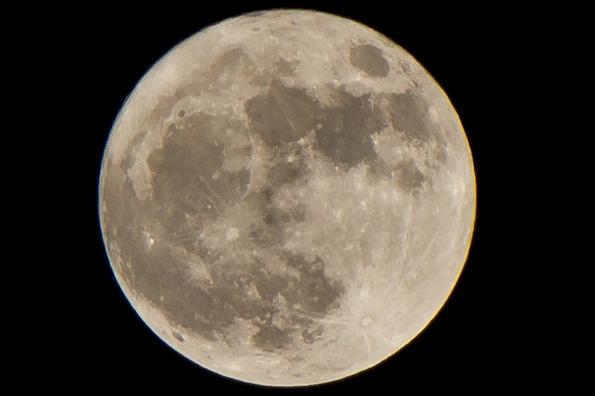
It’s been described on social media as the “perfect” Full Moon. Quite what that means I’m not sure, but there is one factor that makes this month’s Full Moon stand out against the others; it will be this year’s highest Full Moon. But this is true of the Full Moon that happens nearest the winter solstice every year, so there’s nothing particularly “perfect” about this one.
A Full Moon occurs when the Moon is opposite the Sun in our sky, and we see the entire lit hemisphere of the Moon, making it appear full and round.
After it’s full, the Moon will appear to shrink to a gibbous moon (less than full but more the half), a half moon (called the last quarter moon), then a crescent, then a new moon, before growing again through crescent, half, gibbous and back to full. This pattern repeats itself every 29 days, which is approximately one month.
But because it isn’t exactly a month, and because our months vary in length between 28 and 31 days, the Full Moon doesn’t occur on the same numbered day every month, it drifts, seemingly at random.
For example the last decade’s December Full Moons happened on 15, 5, 24, 12, 2 AND 31*, 21, 12, 28, 17, 6 December.
(* In 2009 there were two full moons in December; the second is colloquially known as a blue moon.)
As the 29-day pattern of phases drifts around the 31 days in December it’s not surprising that the occurrence of Christmas Day full moons is around once every thirty years.
The last time this happened was 38 years ago in 1977; the next time it will happen is 19 years in the future, in 2034; an average of every 29 years.
Observing the Moon
If Santa was generous enough to bring you a telescope for Christmas, the Moon is one of the very best places to start. But you don’t want to observe it when it’s full.
This is mainly due to the overall lack of contrast and shadow on the Moon’s surface when it’s lit head-on by the Sun.
The best views of the Moon can be had when you can clearly see the dividing line between light and dark. This line is called the terminator, and when you observe it through a telescope the Moon appears in 3D, with shadows inside craters and beside mountains that really give you a feel for the structure of the Moon’s surface.

In addition the Full Moon is so bright that it drowns out the light of lots of faint astronomical objects, meaning that you would ideally wait till the moon is New, or a think crescent, before venturing out with your telescope to hunt for galaxies and nebulae.
So for stargazers this Christmas Day Full Moon is very far from “perfect”…
Geminids Meteor Shower 2015
One of the most active and reliable meteor showers, the Geminids, happens every year in mid-December. This year’s display promises to be a good one for those meteorwatchers with clear skies.
The maximum rate of Geminids is predicted to occur around 1800 on 14 Dec 2015, but peak rates normally persist for around a day, so the nights of 13 and 14 Dec are both good for meteorwatching. In addition. you’ll see plenty of Geminids from now until a few days after the peak.
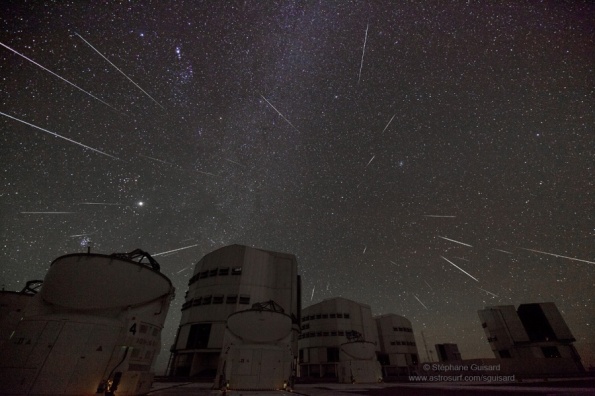
When Gemini Sends Stars to Paranal
Image Credit & Copyright: Stéphane Guisard (Los Cielos de America), TWAN
There are a few ways you can maximise your chances of seeing some Geminids (see The What, How, Where, When and Why) but the best way is to get somewhere dark, like one of the UK’s International Dark Sky Places. I’ll be heading down to Galloway Forest in SW Scotland.
The Geminids’ radiant (the point in the sky where all the meteors appear to emerge from) rises at sunset, so you can begin your meteorwatch as soon as it gets dark enough. The Moon is only 3 days old at maximum so you’ll have no interference to your dark skies.
The number of meteors that you will observe every hour depends on a number of factors:
- the density of the cloud of dust that the Earth is moving through, that is causing the shower in the first place;
- the height above the horizon of the radiant of the shower, the point from which the meteors appear to radiate;
- the fraction of your sky that is obscured by cloud;
- the naked-eye limiting magnitude of the sky, that is a measure of the faintest object you can see.
The Geminids meteor shower has a maximum zenith hourly rate (ZHR) of around 120 (the highest of any meteor shower). This is the number of meteors that you can expect to see if the radiant is directly overhead (the point in the sky called the zenith), and you are observing under a cloudless sky with no trace of light pollution.
However conditions are rarely perfect. In the UK, for example, the radiant of the shower will not be at the zenith; it will be around 10° above the horizon at 1800h, 25° above the horizon at 2000h, 40° at 2200h, 60° at 0000h, and at its highest of 70° at 0200h.
Assuming a clear night, the other factor is the limiting magnitude of the sky, a measure of the faintest object you can see. Man-made light pollution will be an issue for most people. From suburbia the limiting magnitude of the sky is ~4.5 (around 500 stars visible), so you will only be able to see meteors that are at least this bright; the fainter ones wouldn’t be visible through the orange glow. In a big city centre your limiting magnitude might be ~3 (only around 50 stars visible); in a very dark site like Galloway Forest Dark Sky Park the limiting magnitude is ~6.5 (many thousands of stars visible), limited only by the sensitivity of your eye. So in most cases it’s best to try and get somewhere nice and dark, away from man-made light pollution.
The calculation that you need to make in order to determine your actual hourly rate is:
Actual Hourly Rate = (ZHR x sin(h))/((1/(1-k)) x 2^(6.5-m)) where
h = the height of the radiant above the horizon
k = fraction of the sky covered in cloud
m = limiting magnitude
Let’s plug the numbers in for the Geminids 2015.
ZHR = 120 (maximum)
h = 10° at 1800, 25° at 2000, 40° at 2200, 60° at 0000, 70° at 0200h
k = 0 (let’s hope!)
m = 6.5 (if you get somewhere really dark!)
So your actual hourly rate under clear dark skies is
(120 x sin(10))/((1/(1-0) x 2^(6.5-6.5) = 21 meteors per hour at 1800
(120 x sin(25))/((1/(1-0) x 2^(6.5-6.5) = 50 meteors per hour at 2000
(120 x sin(40))/((1/(1-0) x 2^(6.5-6.5) = 77 meteors per hour at 2200
(120 x sin(60))/((1/(1-0) x 2^(6.5-6.5) = 104 meteors per hour at 0000
(120 x sin(70))/((1/(1-0) x 2^(6.5-6.5) = 112 meteors per hour at 0000
If you’re observing in suburbia you need to divide these numbers by around 4, and in bright cities by 10! Nonetheless, even in a city if you’re out at midnight during peak activity you’ll see around 10 meteors per hour.
Remember though that these numbers are assuming perfectly clear skies under perfectly dark conditions, and are assuming a peak rate of 120 at each of these times. It probably won’t be quite this good, but the bottom line is: there’s never a better night to see meteors!
Lunar Eclipse 28 September 2015: The Blood Supermoon
Stargazers in the UK are ideally placed to see a rare astronomical event next week, a Total Lunar Eclipse. While not as dramatic as a Total Solar Eclipse, a lunar eclipse is well worth watching for, as the Moon turns deep red at totality.
Unlike a Total Solar Eclipse, where totality lasts only a few minutes, a total eclipse of the Moon last several hours. In the morning hours of Monday 28 September the lunar eclipse begins at 0111BST and ends at 0622BST as the Moon sets. During the very early and late hours of the lunar eclipse you will see part of the full Moon’s disk darken, but it’s only when the Moon enters totality that it will turn red. This dramatic event will happen between 0311 and 0423BST.
This month’s lunar eclipse is made even rarer by the fact that the full Moon on 28 Sep is what’s called a Supermoon. This means that the Moon is closer than normal to Earth, and will appear slightly larger and brighter in the sky. But don’t believe the hype: it will be only a few % closer and so your eye will not be able to detect the difference between this Supermoon and any other Full Moon – except this time it’ll be blood red due to the eclipse! (The Moon may actually look bigger to you if you catch it low on the horizon, but that’s due to the Moon Illusion).
A lunar eclipse occurs when the Moon, in its orbit around the Earth, passes into the Earth’s shadow, as cast by the Sun. You might imagine that this would happen once every lunar orbit, or once a month. That it does not is due to the fact that the Moon’s orbit around the Earth is tilted by around 5 degrees compared with the Earth’s orbit around the Sun. So in most orbits the Moon passes above or below the Earth’s shadow.
However, once in a while (there are at least two lunar eclipses each year) the orbital planes will align so that the Moon passes through the Earth’s shadow, sometimes just grazing it, in which case we get a partial lunar eclipse, and at other times passing right through the shadow, when we get a total lunar eclipse.
The Earth’s shadow has two distinct regions, forming two concentric cones: the inner, darker, part of the shadow is called the umbra, and objects within this part of the shadow receive no direct light from the Sun. The outer, lighter, part of the shadow is called the penumbra, and objects within this part of the shadow can receive direct light from the Sun, but part of the Sun’s disk will be obscured by the Earth, and so less light than normal falls on the object.
There are several distinct phases of a lunar eclipse, as the Moon travels through the penumbra and umbra. For this lunar eclipse the total time during which the Moon is at least partially in the Earth’s shadow is 5 hours 11 minutes, and 72 minutes of this is spent entirely within the umbra, i.e. in total eclipse.
These phases are given the names: P1, the time when the Moon’s disk enter the penumbra; U1, the time when the Moon’s disk enters the umbra; U2, the time when the entirety of the Moon’s disk is within the umbra; U3, the last time when the entirety of the Moon’s disk is within the umbra; U4, the last time when part of the Moon’s disk is within the umbra; and P4, the last time when part of the Moon’s disk is within the penumbra.
The UK is ideally placed to view this total lunar eclipse, although you will have to stay up very late, or get up very early. The Moon is in the sky for the entirety of the eclipse. Observers in western Europe, NW Africa, E North America, and South America will all see the full eclipse from beginning to end.
A detailed information sheet for this eclipse (and others) is available (pdf) on the NASA Eclipse website.
Perseids Meteor Shower 2015
This month sees the return of the most reliable meteor shower of the year; the Perseids. And with a New Moon occuring at the same time as the peak of this shower this is the perfect opportunity to see hundreds of shooting stars.
Read my previous blog post: Meteor Showers: The What, How, Where, When, Why for general advice on how best to observe meteor showers.
A shooting star – otherwise known as a meteor – is a tiny piece of space dust that burns up in our atmosphere, forming a bright, brief streak of light in the sky. Many people have never seen a shooting star, and think they’re rare events, but given clear dark skies you can expect to see a few every hour on a clear night. From cities, under light polluted skies, you can’t see most of the faint ones, and so only the rarer bright ones are visible.
However at regular times each year the Earth moves through thick clouds of space dust – left behind by comets – and we get a dramatically increased rate of meteors. We’re already within the diffuse outer reaches of the dust cloud that forms the Perseids, and on the night of 12/13 August we’ll be in the densest part of that cloud, and will see the rate increase by a factor of 20!
You can begin watching for Perseid meteors now, and the shower will last until late-August, but the peak of the shower occurs overnight on 12/13 August 2015, which means that the nights on either side of this will be best for meteorwatching.
The best time of night to watch the meteor shower is from around 2200 onwards on 12 August 2014, once the radiant, the point from where the meteors appear to originate, rises above the horizon. The later you observe the higher the radiant will be, and the more meteors you’ll see.
The number of meteors that you will observe every hour depends on a number of factors:
•the density of the dust cloud that the Earth is moving through, that is causing the shower in the first place;
•the height above the horizon of the radiant of the shower, the point from which the meteors appear to radiate;
•the fraction of your sky that is obscured by cloud;
•the darkness of your sky, measured using naked-eye limiting magnitude, a measure of the faintest object you can see.
The Perseid meteor shower has a zenith hourly rate (ZHR) of around 100. This is the number of meteors that you can expect to see if the radiant is directly overhead (the point in the sky called the zenith), and you are observing under a cloudless sky with no trace of light pollution.
However conditions are rarely that perfect. In the UK, for example, the radiant of the shower will not be at the zenith; it will be around 30° above the horizon at 2200, 40° high at midnight, and 50° high at 0200.
Assuming a clear night, the other factor is the limiting magnitude of the sky, a measure of the faintest object you can see. Man-made light pollution will be an issue for most people. From suburbia the limiting magnitude of the sky is ~4.5 (around 500 stars visible), so you will only be able to see meteors that are at least this bright; the fainter ones wouldn’t be visible through the orange glow. In a big city centre your limiting magnitude might be ~3 (only around 50 stars visible); in a very dark site like Galloway Forest Dark Sky Park the limiting magnitude is ~6.5 (many thousands of stars visible), limited only by the sensitivity of your eye. So in most cases it’s best to try and get somewhere nice and dark, away from man-made light pollution.
The calculation that you need to make in order to determine your actual hourly rate is:
Actual Hourly Rate = (ZHR x sin(h))/((1/(1-k)) x 2^(6.5-m)) where
h = the height of the radiant above the horizon
k = fraction of the sky covered in cloud
m = limiting magnitude
Let’s plug the numbers in for the Persieds 2015.
ZHR = 100 at the peak, say.
h = 30° at 2200, 40° at 0000, 50° at 0200, 65° at 0400
k = 0 (let’s hope!)
m = 6.5 (if you’re observing under skies free from light pollution)
So your actual hourly rate under clear dark skies is
(100 x sin(30))/((1/(1-0) x 2^(6.5-6.5) = 50 meteors per hour at 2200
(100 x sin(40))/((1/(1-0) x 2^(6.5-6.5) = 64 meteors per hour at 0000
(100 x sin(50))/((1/(1-0) x 2^(6.5-6.5) = 77 meteors per hour at 0200
(100 x sin(65))/((1/(1-0) x 2^(6.5-6.5) = 90 meteors per hour at 0400
Remember though that these numbers apply only to the peak of the Perseid occuring at these times. If the peak happens at 0400 on 13 August (and we’re not sure exactly when it’ll occur) then you might see 90 meteors per hour, but “only” 20-25 per hour if the peak occurs at 2200 on 12 August.
Remember that these rates are for perfectly dark skies. If you live in surbribia then divide these numbers by 4 or 5; if you live in a bright city divide these numbers by 10. Take home message: get somewhere dark!
It is worthwhile having a look on the days leading up to the peak, when the numbers of meteors will be gradually increasing towards this rate.
